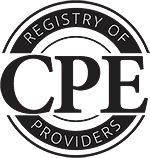<p>Financial statement auditors are engaged to provide reasonable assurance that financial statements are not materially misstated, whether due to fraud or error. Professional standards require auditors to obtain sufficient and appropriate evidence to support that opinion. It is critical for effective and efficient auditors to have a clear understanding of all the important elements and concepts related to properly identifying, evaluating, and deciding how to respond to risk in a financial statement audit.</p>
<p><strong style="font-size: 13.8px;">Major Topics:</strong></p>
<ul>
<li style="margin-left: 18pt;">The reason that entities engage a financial statement audit</li>
<li style="margin-left: 18pt;">List the applicable financial reporting frameworks available</li>
<li style="margin-left: 18pt;">Differentiate the responsibilities of reporting entity management and auditors</li>
<li style="margin-left: 18pt;">The various phases of a financial statement audit</li>
<li style="margin-left: 18pt;">Evaluating and documenting audit risk, both at the overall and relevant assertion level</li>
<li style="margin-left: 18pt;">Case study differentiating high-risk audit engagements and higher-risk audit areas</li>
</ul>
Prerequisites
No Advanced Preparation or Prerequisites are needed for this course.
Designed For: Professionals requiring knowledge of fundamental audit concepts.
Learning Objective
- Discover and discuss the basis for an audit.
- Explore and explain the auditor’s professional responsibilities.
- Identify and describe important audit concepts, such as materiality.
- Recognize and explain the foundational principles of the audit risk formula.
- Discover and discuss considerations when Identifying and assessing risk of material misstatement.
Last updated/reviewed: July 6, 2025



Ask the instructor a question about this lesson